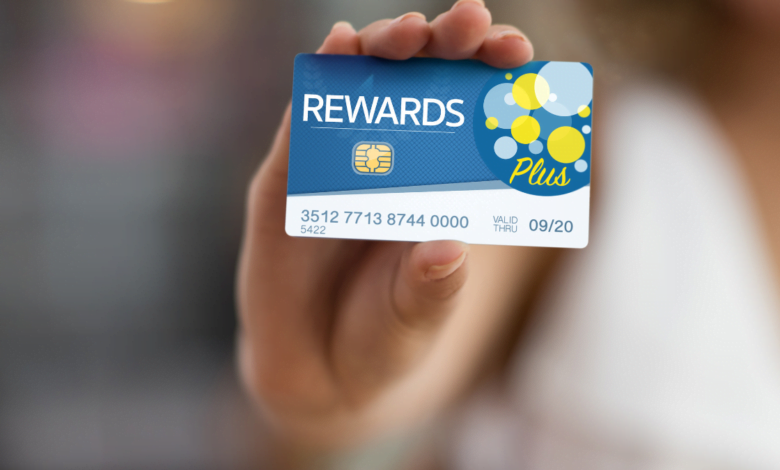Travel the World for free

Understanding travel rewards can feel like a societal duty, with 35% of Americans hooked on maximizing points and miles. With major changes this year, like Hyatt’s partnership with Mr & Mrs Smith and SAS switching alliances, staying informed is crucial. Here’s a beginner’s guide to earning and redeeming rewards, from setting travel goals to mastering credit card strategies and optimizing redemptions. Sharpen your skills and make the most of your travel rewards with these tips.
Sign up for your early morning brew of the BizNews Insider to keep you up to speed with the content that matters. The newsletter will land in your inbox at 5:30am weekdays. Register here.
By Ramsey Qubein
The points and miles game may have perpetual appeal, but it changes regularly as its rules and strategies evolve with time. Yet with 35% of the US population admittedly obsessed with maximizing travel rewards, according to a NerdWallet study last year, it might feel like a societal obligation to maintain fluency in this quirky language. ___STEADY_PAYWALL___
This year you may find yourself in need of a refresher, with major changes afoot in both the hotel and airline loyalty landscapes. Take Hyatt Hotels Corp’s World of Hyatt, which has just teamed up with Mr & Mrs Smith to open up points bookings at more than 1,000 spectacular boutique hotels and estates around the world. Or such seemingly insignificant details as SAS dropping its Star Alliance affiliation for SkyTeam later this summer; even if you’re not a frequent flyer on the Scandinavian carrier, the move can hold huge implications for how you book awards tickets.
It can be dizzying to stay on top of all these granular changes—much less understand how they impact you specifically. Some personal finance experts make it out to be such a complex landscape, they suggest that the time it takes to maximize travel rewards is worth spending only if you earn less than $200,000 a year. In reality, all it takes is a solid understanding of the basics to make sense of everything.
Here’s a beginner’s crash course on how to earn and redeem points and miles with all of the latest changes in mind. Use it to brush up on the fundamentals and refine your strategy ahead of your busiest travel months.

Step 1: Identify your goals.
Just as with other aspects of your financial planning, the first step in succeeding with points and miles is having a clear goal in mind. Family trip to Hawaii? Honeymoon in Paris? Business class to the Maldives? You’ll hit your goal faster if you know what you’re working toward.
Say you’ve got a safari in mind. Look at which airlines best serve your dream itinerary—is it the direct flight on United or Delta to Johannesburg or the flight from New York to Nairobi on Kenya Airways? (The latter is associated with SkyTeam, and you can book its flights with Delta SkyMiles over the phone.) Would the JW Marriott Masai Mara fit the bill, or are you more interested in heading further south to Victoria Falls River Lodge, which is newly accessible via Hyatt?
Thinking through the basic contours of your itinerary will help you identify the airlines and hotel companies that can help you realize the trip. Then you can look at which credit cards and transfer programs will help you rack up the loyalty currency for those providers. Optimize your spending to contribute to these goals.
If you’re newly establishing loyalty, use redemption rates to help you decide between multiple available options. Delta, for instance, tends to price its reward flights much higher than United, driving down the value of its miles. Hyatt points tend to have greater value than ones with Hilton Worldwide Holdings Inc, based on the dollar spending required to redeem awards.
Step 2: Learn the market values.
Generally, your points and miles earnings are proportionate to the dollars you spend. But their value can vary tremendously when you redeem these for free travel.
The base value of a point or mile is typically one cent, but real success is getting three cents to the point. Make it a habit to compare prices in miles and dollars to determine your exchange rate: You’ll commonly see that a business-class upgrade commands far less of a price hike when purchased with miles than with dollars. But the rule of thumb that bigger purchases were always better left to miles has changed.Because airlines are increasingly incentivizing shorter-haul leisure bookings, you may see deep discounts on the award prices for these tickets, too.
Hotel redemptions are trickier to maximize as more companies shift to dynamic points pricing—where the points prices are directly tied to the dollar price—and away from tiered pricing, which used fixed values. Once again, World of Hyatt has emerged as the winner in this regard; it’s the lone large company to still use an award chart with static pricing. This means you can save your points for peak-season moments, when the dollar rates are high, without being charged more points.
Say you want to go to Paris over the winter holidays, when the $1,000-per-night (100,000-point) hotel room you were eyeing will cost twice as much. While paying 200,000 Marriott or Hilton points for that room in peak season may feel better than paying $2,000, Hyatt will never charge more than 90,000 points per night—its fixed value for suites at top-end hotels.

Step 3: Become an expert points trader.
The golden eggs of loyalty points are the ones you get from your main credit card program: Think American Express Membership Rewards, Citi ThankYou Rewards, Capital One Rewards or Chase Ultimate Rewards. That’s because they have the most flexible redemption terms and are the easiest to transfer to other programs. While in some cases, you can use them like cash—say, by paying for your flights at a rate of one cent per point—this should be seen as a fallback plan, given the low exchange rates. The better deals, especially when booking hotels and flights, usually come by transferring points to partner programs, where you can get more bang for your loyalty buck.
You won’t know where the best deal is unless you do your homework. Compare the dollar costs there to the mileage price on an airline’s website. Do the same with hotels. If all this makes your head spin, you can use such free websites as Seats.aero, PointsYeah.com and AwardLogic.com to help you parse your options.

Step 4: Diversify your credit card portfolio.
On a fundamental level, it’s easy to understand how the Chase Sapphire Reserve card, which awards 3x points per dollar spent on travel, will get you to that safari faster than the Chase Freedom card, which awards only 1x points per dollar on travel.
The harder part is keeping track of which card is best for what, rather than swiping the same plastic everywhere you go.
Groceries, gas, restaurants, ride-sharing, office supplies and utility bills: All of these may have different bonus earnings, depending on the card you use. Some may change from month to month, depending on your card. It can be helpful to place a sticker on the back of each of piece of plastic to remind you which ones provide bonus earnings on different categories. As long as all those points can transfer to a common place, it doesn’t matter how many cards you use on a day-to-day basis.
That’s a further reason to consider applying for new cards, particularly when big sign-up bonuses are available. A key hack here: If you’re going to fill out the paperwork for several new cards, do it all in one day so your credit score takes just one hit (versus applying for different cards on various days).

Step 5: Never waste an opportunity to earn
Often-overlooked shopping portals can yield big benefits from purchases that don’t fall into the traditional spending categories outlined above.
Say you’re buying new exercise gear or a summer wedding outfit. Make those purchases by clicking through your credit card’s shopping portal to Lululemon or Saks Fifth Avenue’s websites, for instance, which couldnet you some 8 points per dollar on a lucky day. (Actual values fluctuate.) Those points are in addition to what you would normally earn for every dollar spent on your card.
Look for your card or airline’s shopping portal when you log in to your account, usually under “travel.” A few examples include MileagePlus Shopping and AAdvantage eShopping. The latter offers a rare “triple dip”: Besides offering credit card points and a spending bonus for shopping through the portal, shopping there can also earn elite-qualifying miles that unlock VIP status with the airline.
Have multiple shopping portals to choose among? EvReward lets you input a brand or store name—say Dolce and Gabbana or Best Buy—to determine which portal is offering the biggest bonus.
Not just online shopping can help accrue points. Taking an Uber? Synch your account with Marriott Bonvoy to earn bonus points with every ride. Prefer Lyft? Add your Delta SkyMiles number to your profile to earn miles whenever you hail a car. Have a caffeine habit? You can get SkyMiles at Starbucks, too. Tons of similar partnerships lie in the fine print of many credit card agreements.
MileagePlus Dining and SkyMiles Dining are additional ways to collect additional award miles just for dining out. Register your credit card through these programs and you’ll automatically earn miles when you swipe that card at any affiliated restaurant. Tie it to a business card, for instance, and you can earn 500 miles on that celebratory bottle of $500 Dom Pérignon you order after closing a big deal. Such partnerships exist at some 30,000 restaurants across the U.S.
Step 6: Sharpen your redemption tool kit.
Congratulations! You’ve hit your points- and miles-savings goals. It’s time to redeem them for that dream trip.
Websites such as Award Logic and Point.me exist to help you make the most of your points and miles balances by finding the best redemption rates available. Both sites have free and paid services, depending on how often you need to use them.
If you’re flexible and open to visiting someplace new, take advantage of online tools that show you where your miles can take you. PointsYeah.com has a “dreamer” section that allows you to enter your preferred award program and origin to uncover all the places your miles can take you on chosen dates. American AAdvantage has its own tool for the same purpose. To see where your miles can take you, enter the number of miles you have and then enter your preferred departure airport and dates.
Read also:
© 2024 Bloomberg L.P.



